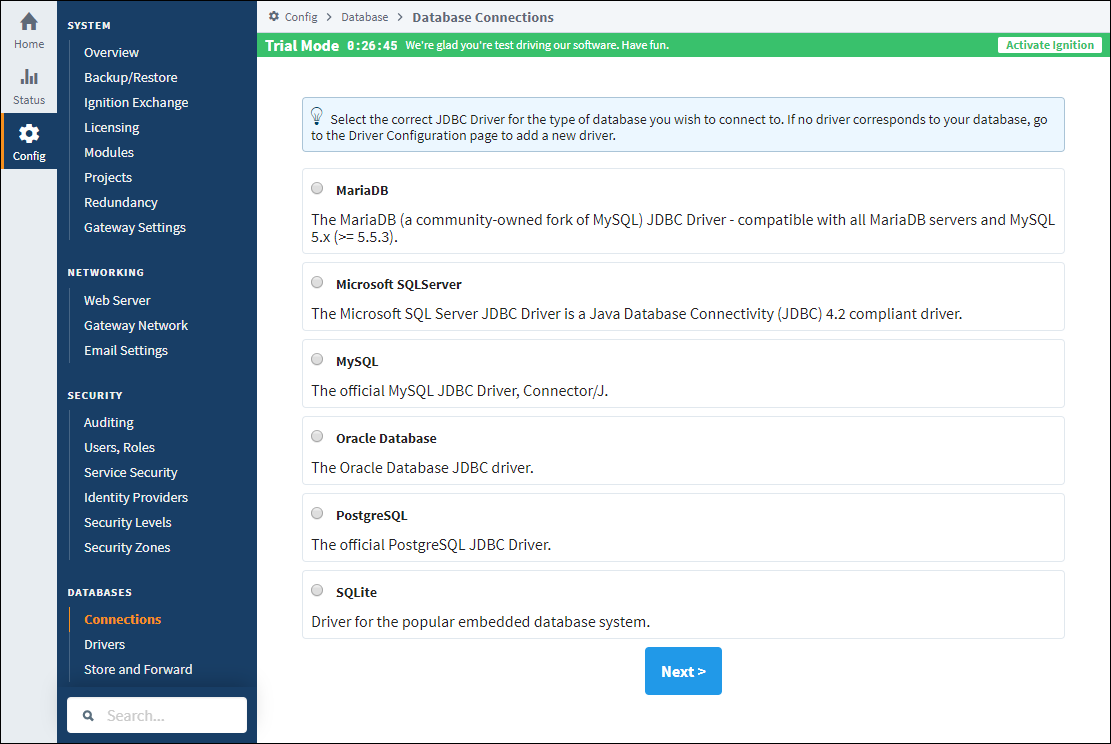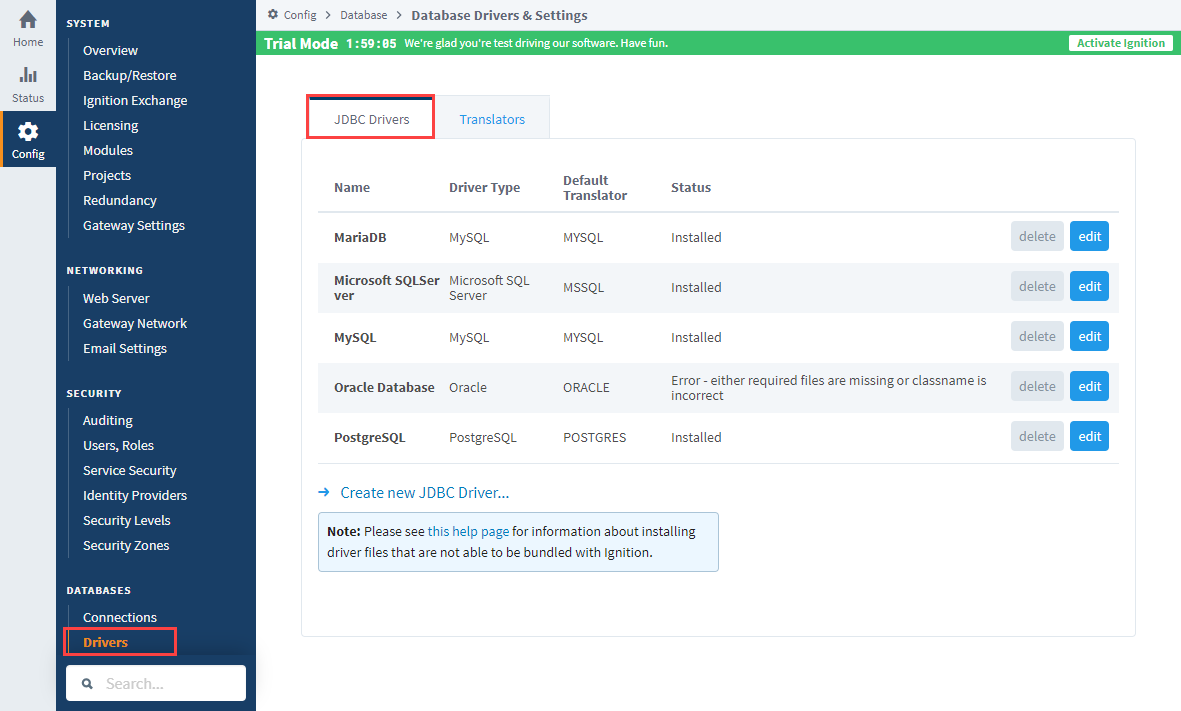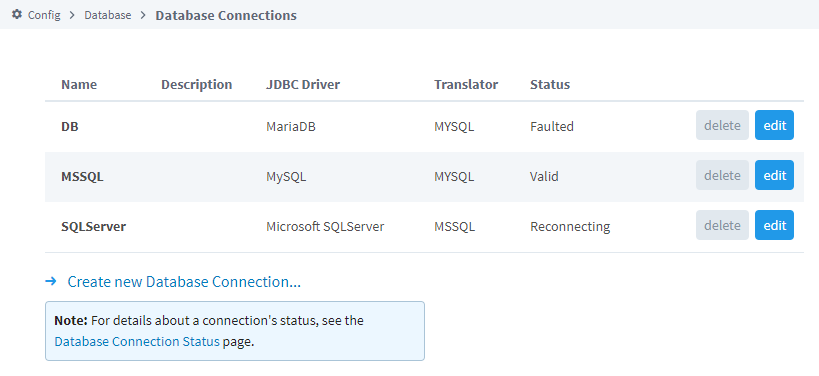Database Connections
How are Databases Used in Ignition?
While connecting to a database is not required for basic status and control functionality, it can dramatically increase the possibilities that the system offers. There are a few places where databases are used in Ignition, such as historical data logging, reporting, storing alarm logs, and as your tags storage.
Historical Data Logging
Logging data for historical analysis, either through Tags Historian or with the SQL Bridge module, requires a database connection. Databases are great at handling historical data, and by using a standard relational database your data is stored in an open format that can be used in many ways.
Reports, Graphs, and Charts
The Vision module makes it easy to present data stored in databases in a variety of ways. You can quickly create charts that show performance over time, locate anomalies, detect trends, and more. Furthermore, it's important to remember that it is possible to pull data from any database that Ignition is connected to, even if the data wasn't placed there by Ignition. This means you can tie in data from other sources or areas of your company, such as pulling in inventory and staff information, as well.
Storing Alarm Logs
Store alarm information historically and examine it later for patterns or trouble spots.
Getting Started with Databases
The first step in using a database with Ignition is to identify a database server. Many companies already have database servers maintained by their IT departments. If you do not, or wish to set up your own database server for Ignition, the Supported Databases section below offers some advice on choosing a database vendor.
Once you've identified a server, all you need to do is create a connection to that server to get up and running.

Supported Databases in Ignition
Ignition has been tested with the following databases, and can connect to them directly after installation. You can connect to other databases by installing additional JDBC drivers (the Java database connection specification), which are often provided by database vendors.
Full Support
| Database | Version |
|---|---|
| MySQL | 5.0+ for full support. Ignition can connect to 4.x, but many features such as Tags are not tested. |
| Microsoft SQL Server | 2005, 2008, 2012, 2014, 2016, 2017, 2019, 2022 (full and express editions). Ignition can connect to 2000, but has not been fully tested. |
| Oracle | 10g, 11g, 12c (full and express). The letters stand for "grid" and "cloud" |
| PostgreSQL | 8.0+ |
| Firebird | All versions. |
| IBM DB2 | 9.5+ |
| SQLite | A driver for the popular embedded database system. This can be used to connect to an existing SQLite database, or create a new database: setting the connect URL property to a file that doesn't exist will result in the driver attempting to create the database. |
Limited support
| Database | Version |
|---|---|
| Other JDBC drivers | Due to variances in databases, some features may not work fully through other non-tested JDBC drivers. However, it is usually possible to get full functionality though the careful use of the database translator feature. For example, the JDBC driver for MariaDB could be downloaded and added to Ignition. |
Installing and Connecting to a Database
Once you've identified a server, all you need to do is create a connection to that server to get up and running. See the Installing Databases and Connecting to Databases sections for details about how to install and connect to different databases through Ignition.
If we don't already have a connector for your database type, you can simply add it in yourself.
Database Drivers and Translators
What Is JDBC?
JDBC stands for the Java DataBase Connectivity API. It is a standardized way for Java-based applications to interact with a wide range of databases and data sources. A JDBC Driver enables Ignition to connect to, and use data from, a particular database system.
JDBC in Ignition
Ignition, being a Java-based application, leverages JDBC in order to connect to a variety of data sources. This enables Ignition to offer a standardized set of functionality on a wide range of different systems and databases. This includes not only commonly-used databases such as MySQL, Microsoft SQL Server, and Oracle, but additionally other lesser-known systems as well, provided the manufacturer offers a JDBC driver for the system.

Monitoring Connection Status
The state or status of a database can be monitored from the Status section of the Gateway Webpage, under Connections > Databases. The status panels show the current state and a fault message, if applicable, or throughput statistics if the connection is active.
When a connection is not available, it is re-tested every 10 seconds, and the status is updated.
